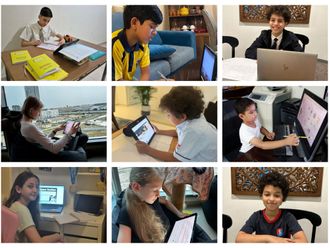Sharjah: Over 600 high school and undergraduate students attended the Model United Nations (AUSMUN) conference at the American University of Sharjah last week.
The three-day conference, now in its ninth year, allowed student delegates to simulate the various United Nations committees and develop a sound understanding of international relations and diplomacy.
In the process, students exercised their skills of research, negotiation and public speaking.
Opened by Dr Björn Kjerfve, AUS Chancellor, AUSMUN is a collaborative effort of AUS undergraduate students who have spent a year creating a platform where alliances are created and debates are fostered, and solutions to some of the most pressing issues of the present are proposed.
An initiative of the Department of International Studies of the College of Arts and Sciences, the conference this year featured 10 committees to facilitate this process, offering the widest selection in AUS history.
AUSMUN participating students simulate United Nations activities by representing a member state or an organisation in a formal assembly.
According to Dr Johannes van Gorp, Assistant Professor of International Studies, “At AUSMUN, delegates gain valuable insight into the international realm of politics, especially extensively researching and echoing the policies of their assigned countries. Initially, when AUSMUN began, it involved around 100 high school and university students from around the region. The current board members have managed to grow the conference to include representatives from regional schools, including those in Kuwait, Egypt and Jordan.”
Delegates pick one of various committees and address different topics, ranging from security concerns to the environment, public health to economic and social issues.
The main objective of each delegate is to engage in finding solutions to the problem his/her committee is addressing.
Consequently, within a committee, delegates form groups and draft resolutions. Once that stage is complete, the resolution is reviewed and, upon approval, it is presented to the committee. Once the majority in the committee is satisfied with the resolution, the resolution can be passed in a voting procedure.












